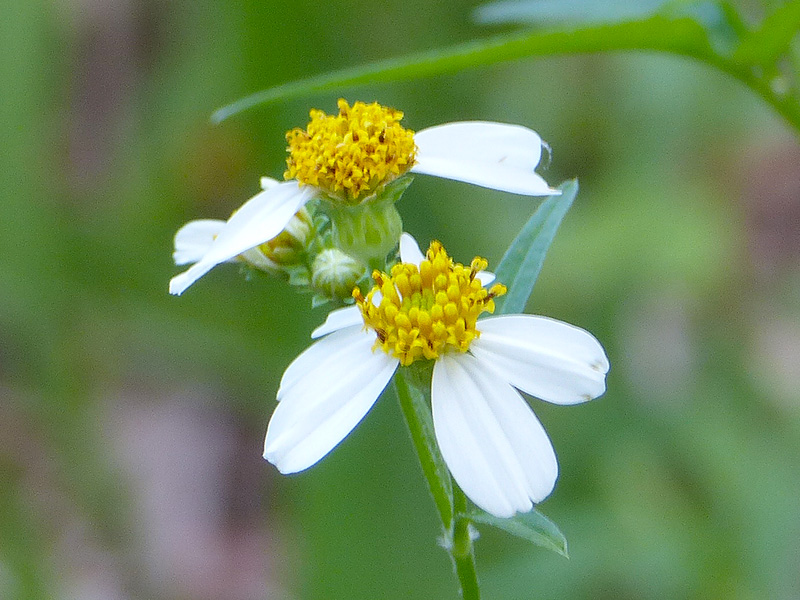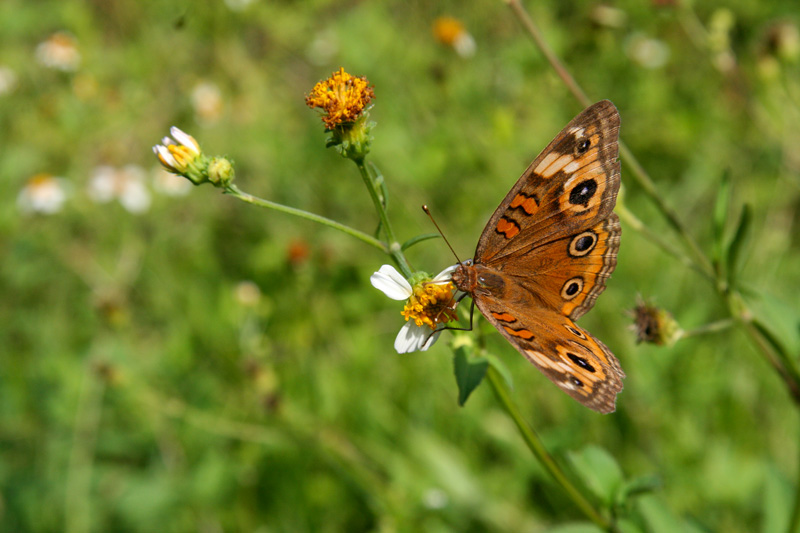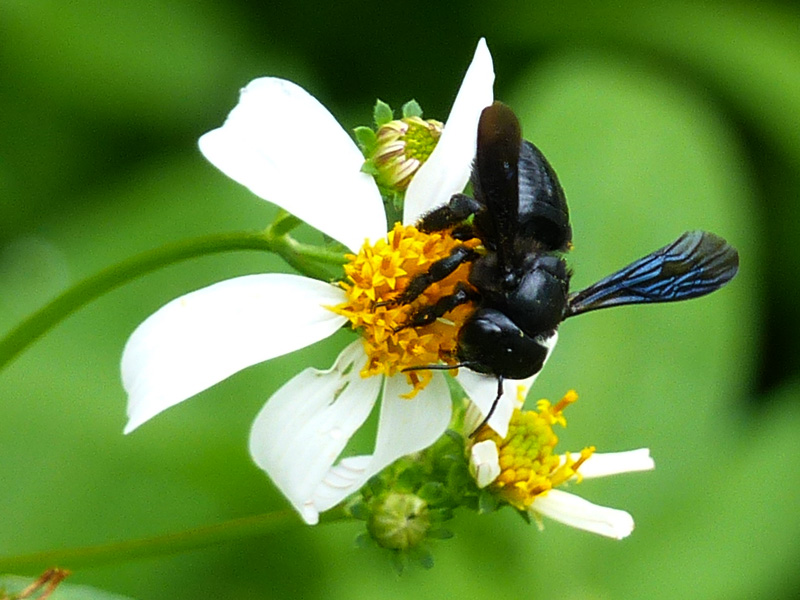
Our Florida state butterfly, the zebra longwing loves it, but lots of gardeners do not. It is common beggarticks (Bidens alba). Common names for this plant are about as common as this plant and include Spanish needles, butterfly needles, romerillo, and monkey’s lice.
Gardeners often rue this plant because of its prodigious seed production. One plant can yield 3,000 to 6,000 seeds.

And, each seed is equipped with two hooks that facilitate its transport on your clothes, your dog’s fur, … Its species name, Bidens, alludes to this structure, since in Latin, bi means two (think bicycle), and dens means teeth (think dentures).

Common beggarticks readily exploits any disturbance. It will be leggy in shade or shrubby in full sun as shown along the edge of the Oslo Riverfront Conservation Area parking lot.


Like many members of the daisy family, Asteraceae, common beggarticks has lots of tiny flowers in its center (or disc). These flowers entice pollinators with pollen and nectar rewards.
All sorts of butterflies visit this plant including julias…

… gulf fritillary …

… white peacocks …

… mangrove buckeyes …



According to the Florida Wildflower Foundation, this plant is the third most common source for honey production, the handiwork of European honeybees. Its nectar and pollen-rich flowers also are visited by native bees like the southern carpenter bee shown below.

Common beggarticks provides a bounty of pollen and nectar but can be weedy.
